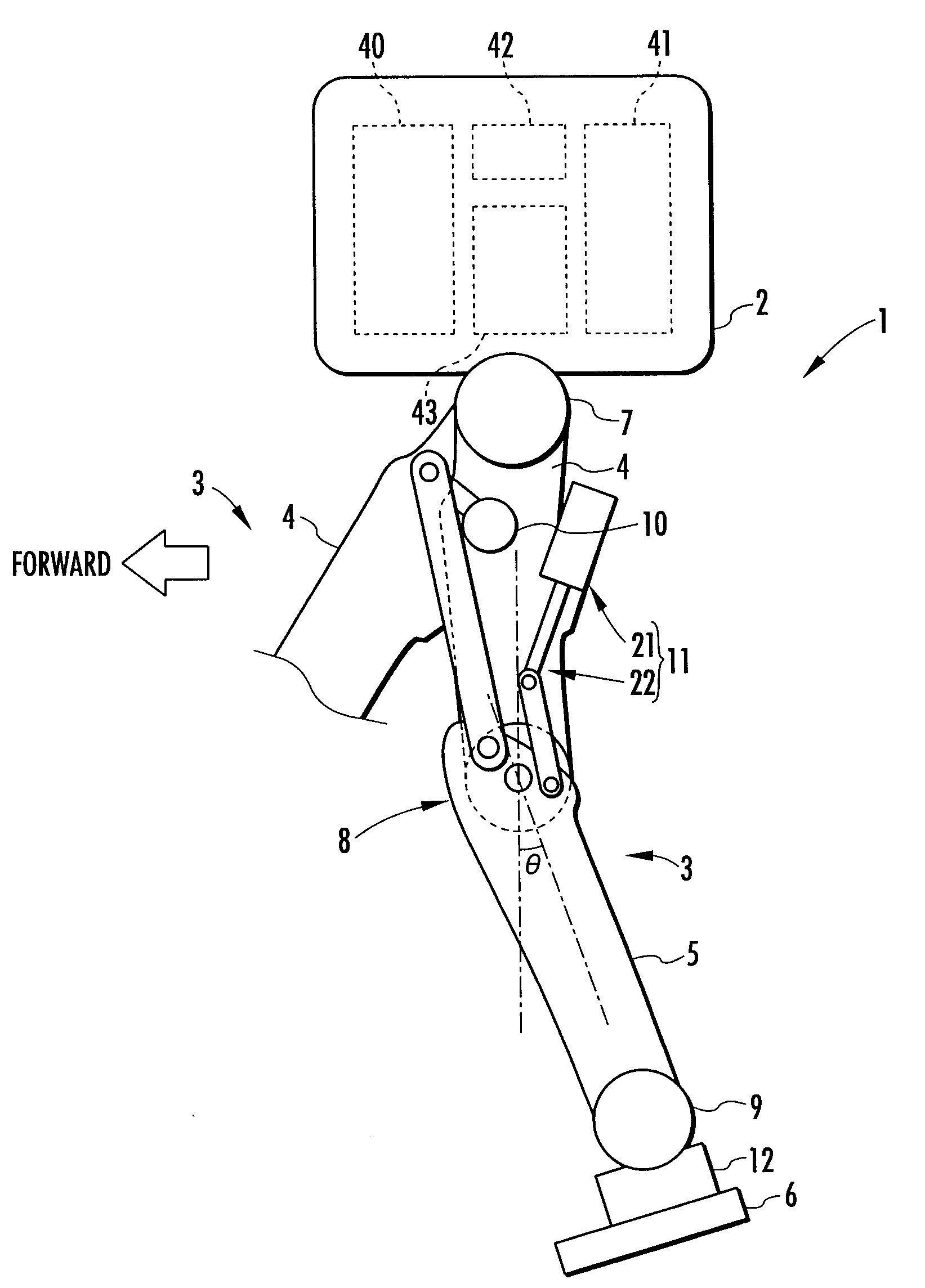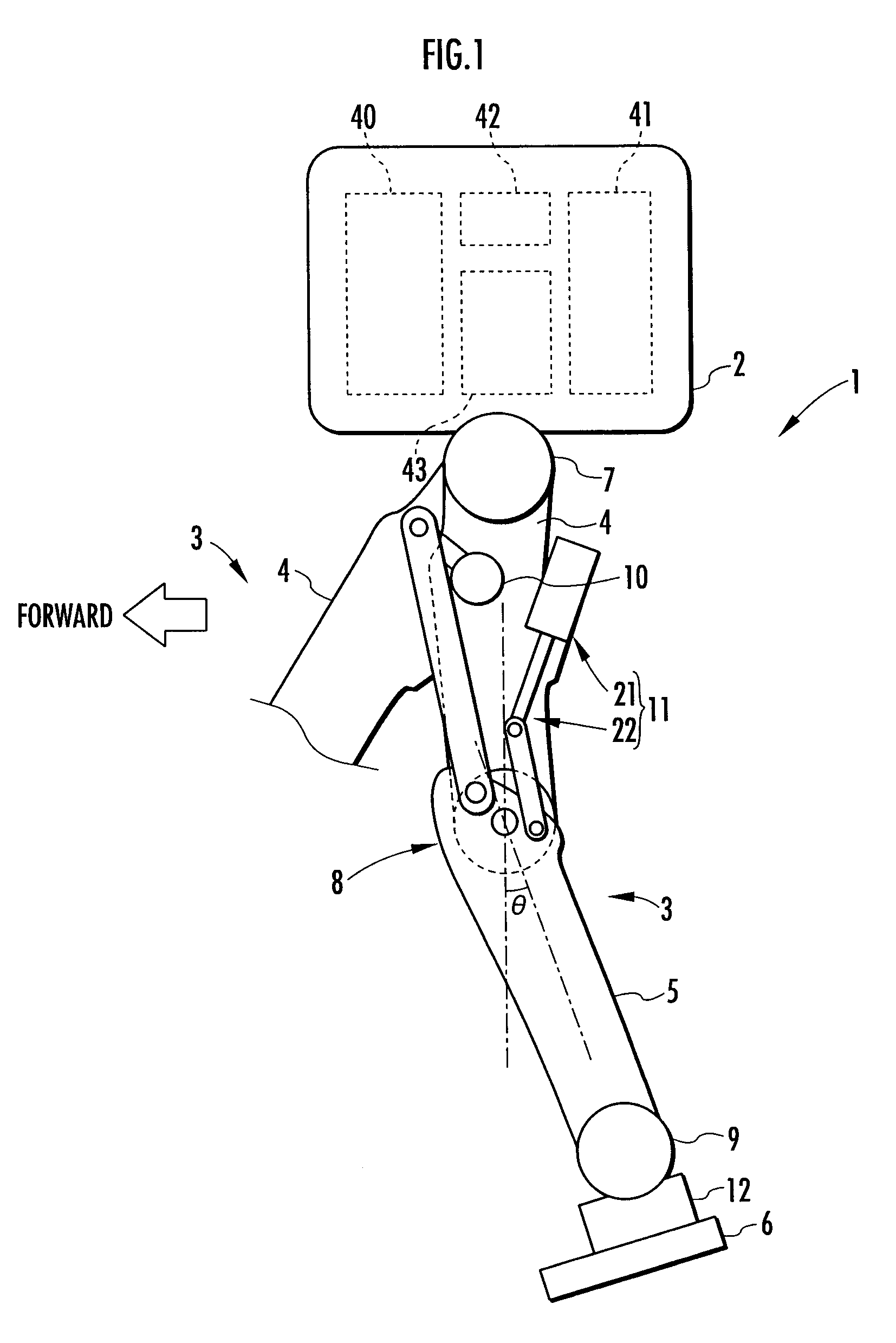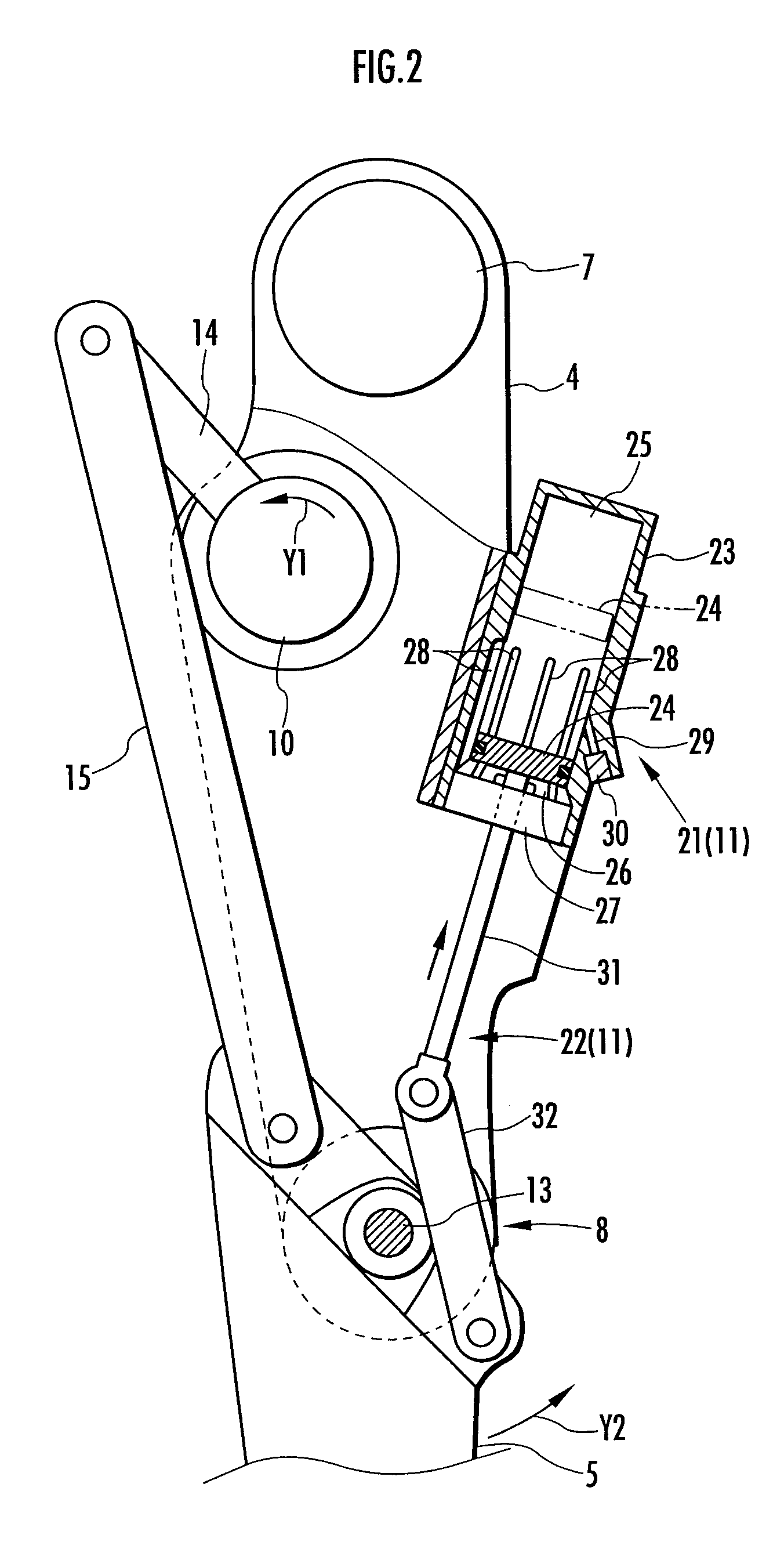Leg Joint Assist Device of Legged Mobile Robot
a mobile robot and assist device technology, applied in the direction of couplings, manufacturing tools, transportation and packaging, etc., can solve the problems of increasing the energy consumed by the joint actuator in some cases, the difficulty of restrainting the generated eventually energy consumption, and the inability to achieve a further reduction in energy consumption. achieve the effect of reducing the burden on the joint actuator of the knee joint, preventing the increasing driving force of the joint actuator, and preventing the excessive assisting
- Summary
- Abstract
- Description
- Claims
- Application Information
AI Technical Summary
Benefits of technology
Problems solved by technology
Method used
Image
Examples
Embodiment Construction
[0026]A first embodiment of the present invention will be explained with reference to FIG. 1 to FIG. 7. FIG. 1 is a diagram schematically showing the construction of a bipedal mobile robot as a legged mobile robot in the present embodiment. As shown in the figure, a robot 1 is equipped with two legs 3 and 3 extendedly provided downward from a body 2, which is a base thereof. These legs 3 and 3 share the same structure, including an assist device, which will be discussed later, so that only a part of one leg 3 (the leg 3 on the right side as observed toward the front of the robot 1 in the figure) is shown in the figure.
[0027]As with the legs of a human being, each leg 3 is constructed by a thigh 4, a crus 5, and a foot 6 consecutively connected in order through the intermediary of a hip joint 7, a knee joint 8, and an ankle joint 9 from the body 2. More specifically, the thigh 4 of each leg 3 is extended from the body 2 through the intermediary of the hip joint 7, the crus 5 is conne...
PUM
 Login to View More
Login to View More Abstract
Description
Claims
Application Information
 Login to View More
Login to View More - R&D
- Intellectual Property
- Life Sciences
- Materials
- Tech Scout
- Unparalleled Data Quality
- Higher Quality Content
- 60% Fewer Hallucinations
Browse by: Latest US Patents, China's latest patents, Technical Efficacy Thesaurus, Application Domain, Technology Topic, Popular Technical Reports.
© 2025 PatSnap. All rights reserved.Legal|Privacy policy|Modern Slavery Act Transparency Statement|Sitemap|About US| Contact US: help@patsnap.com



